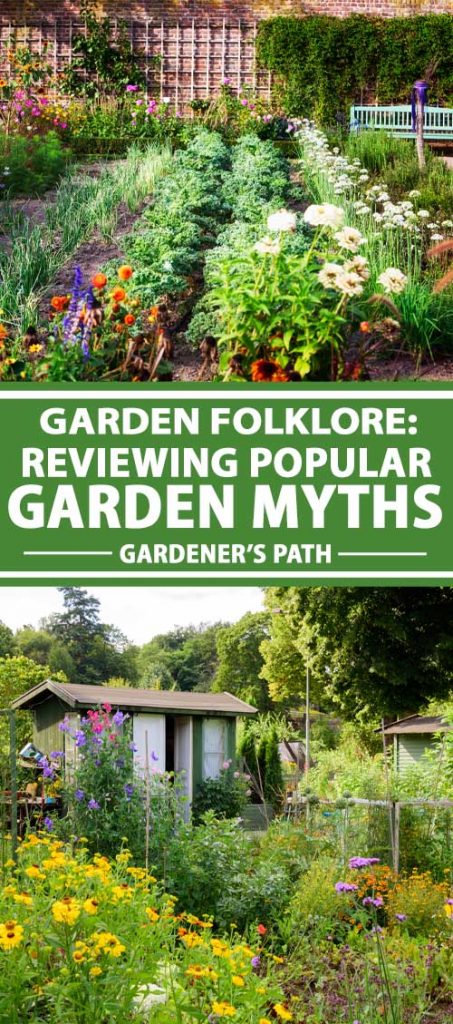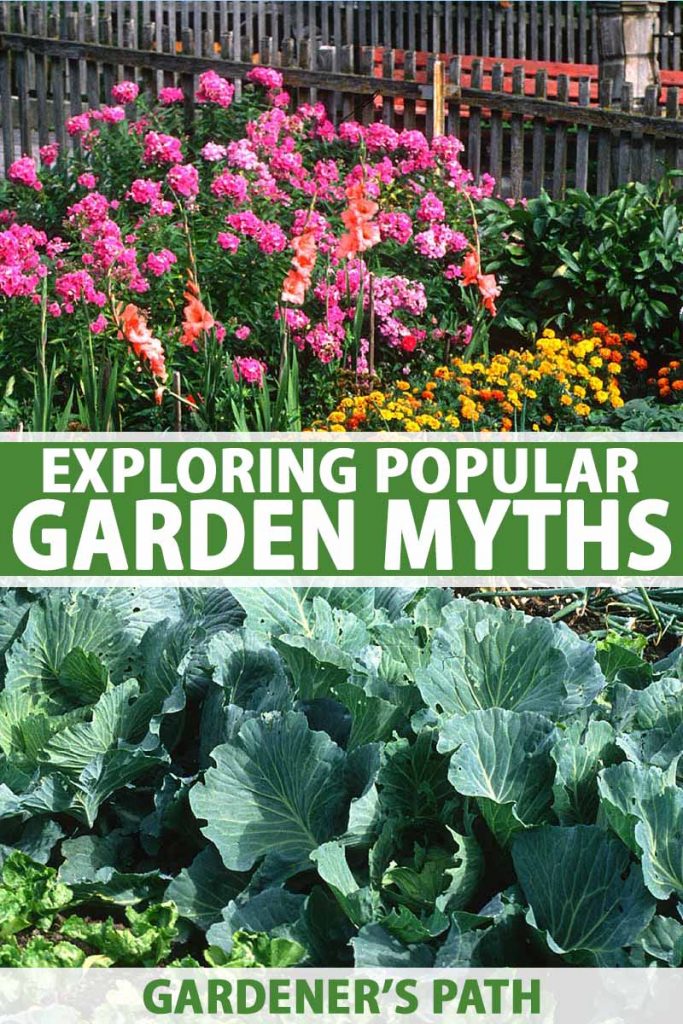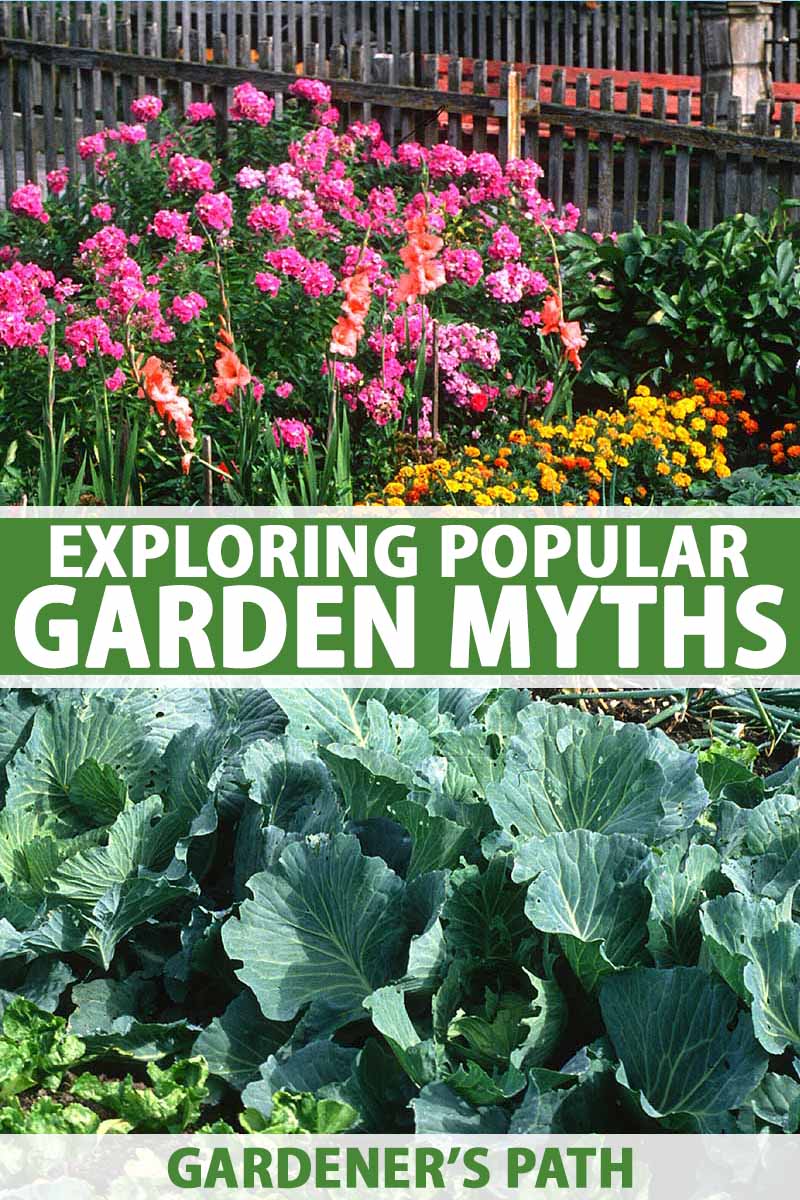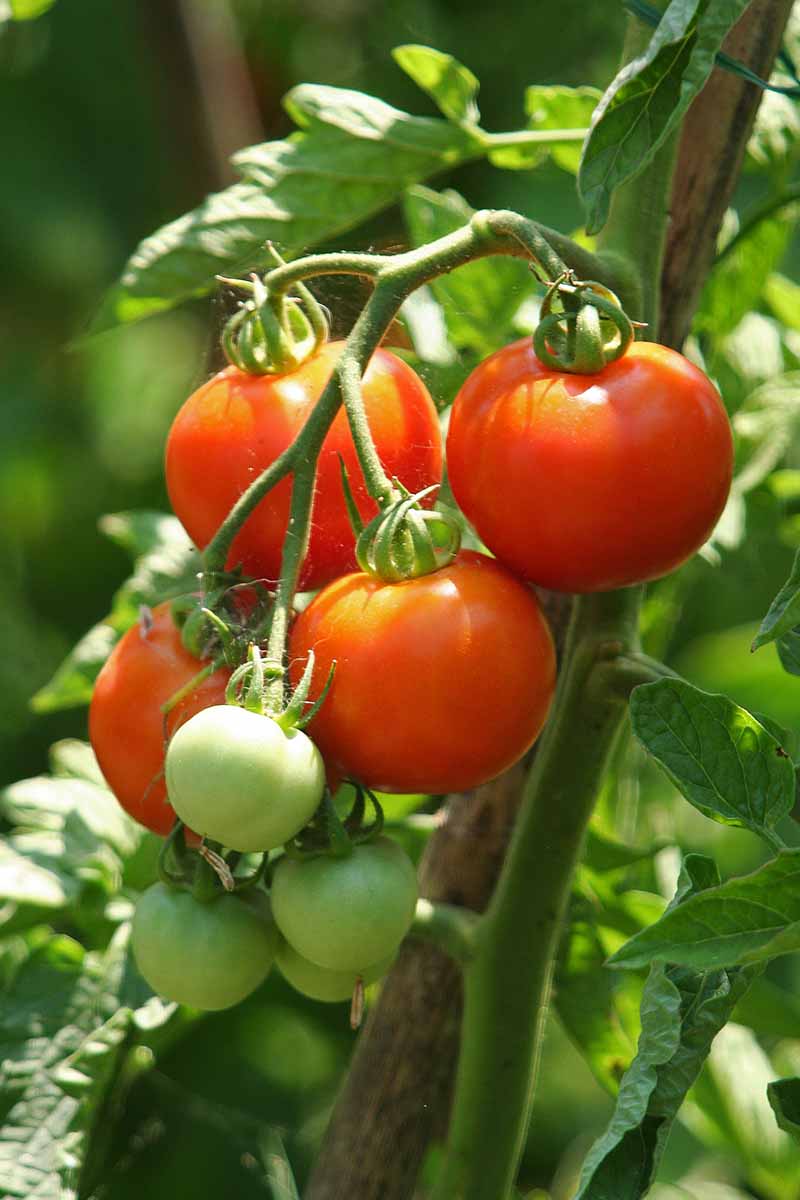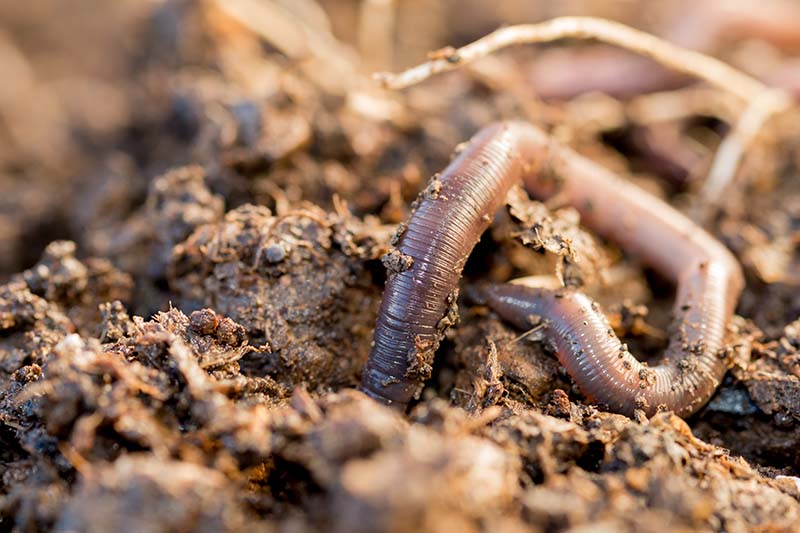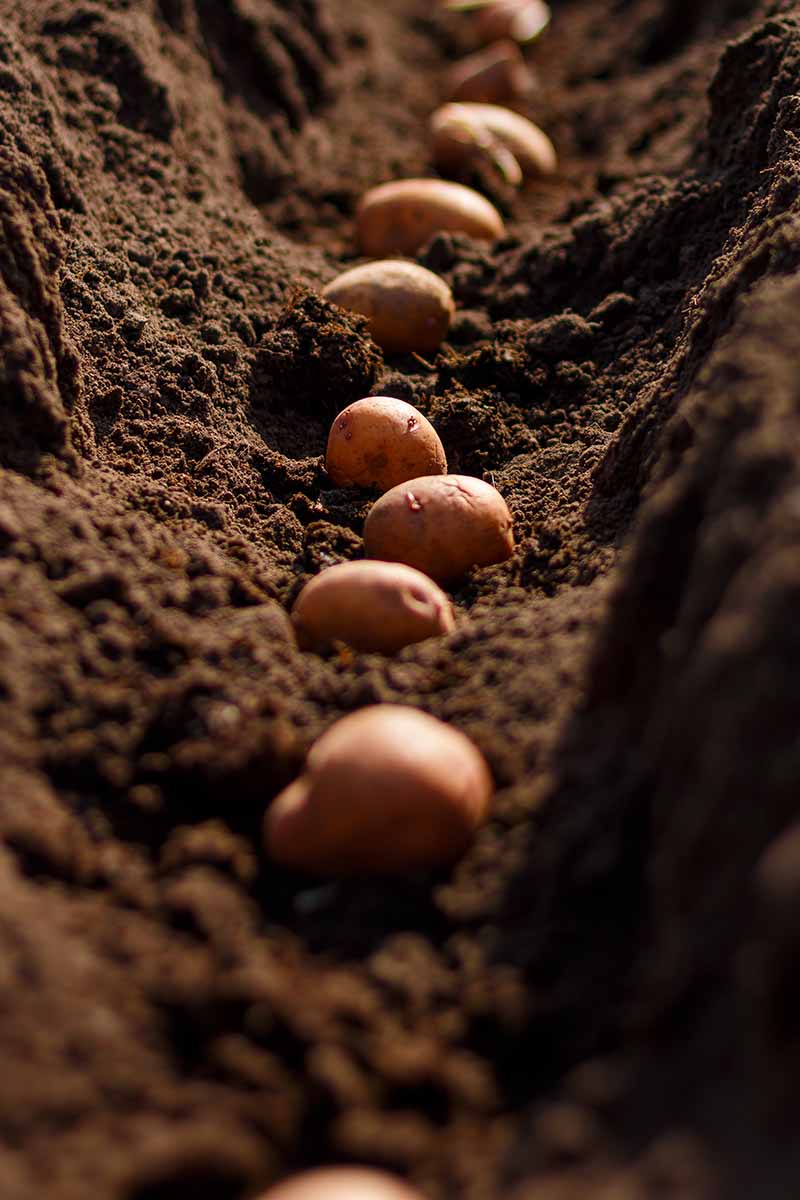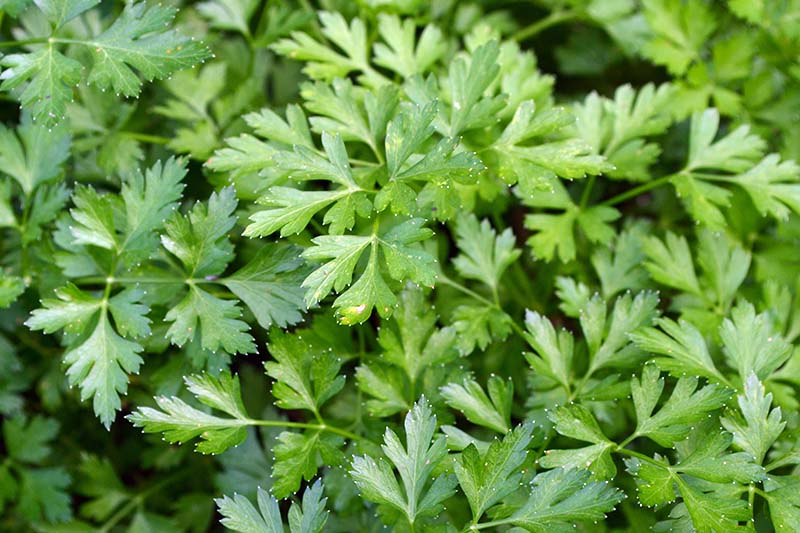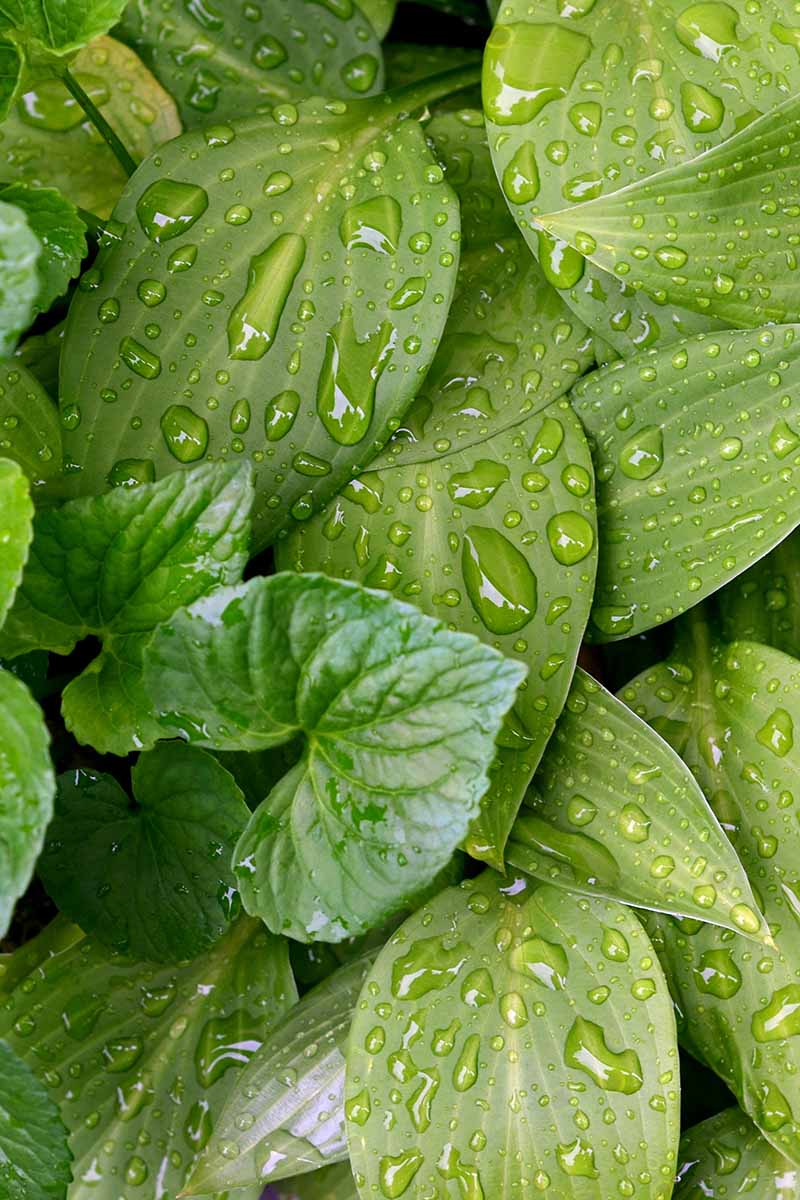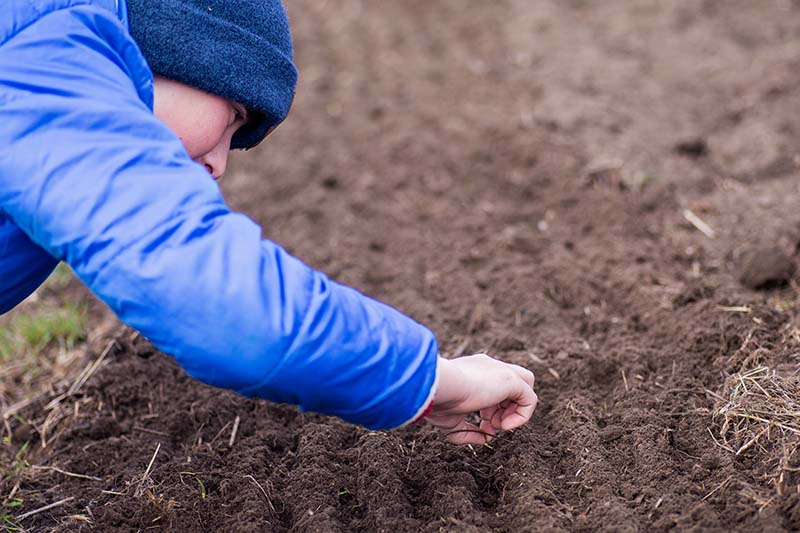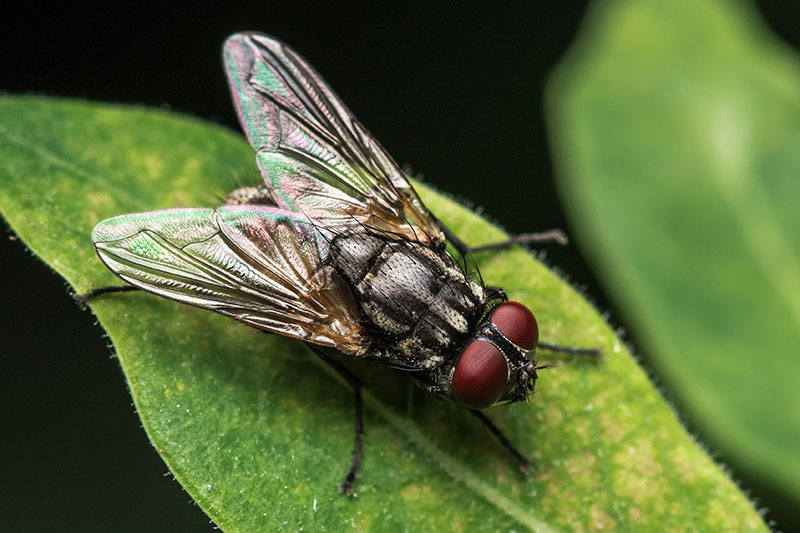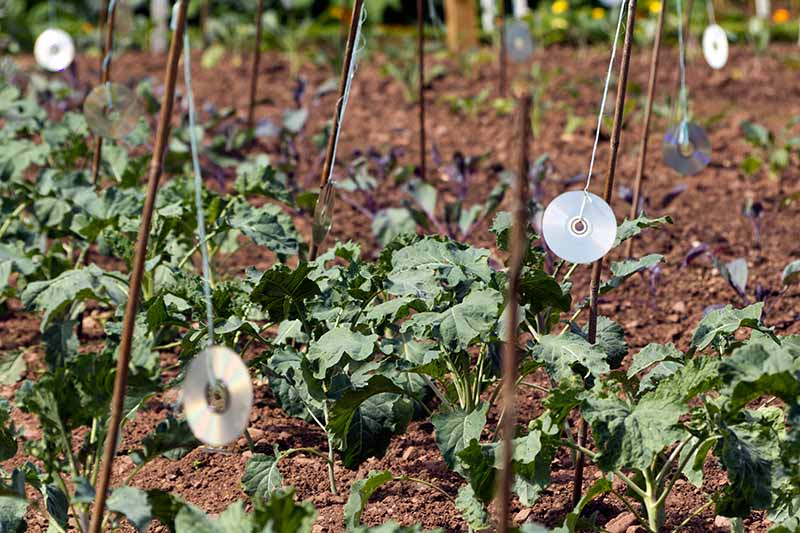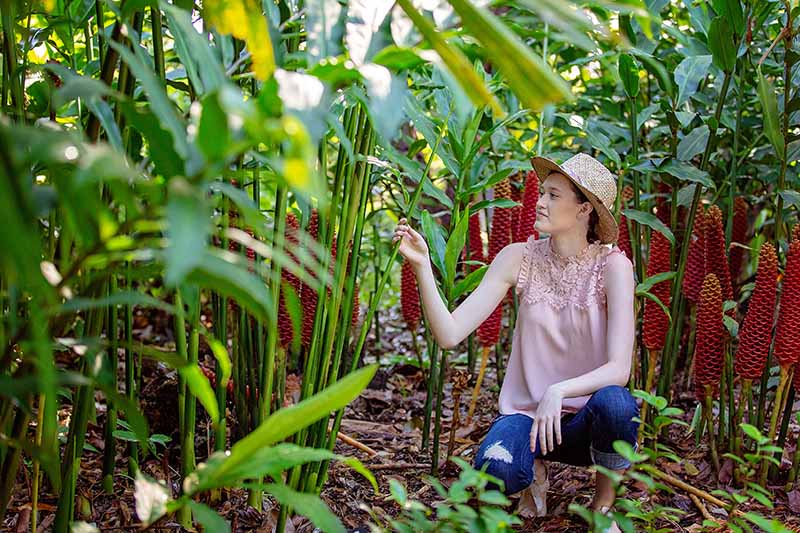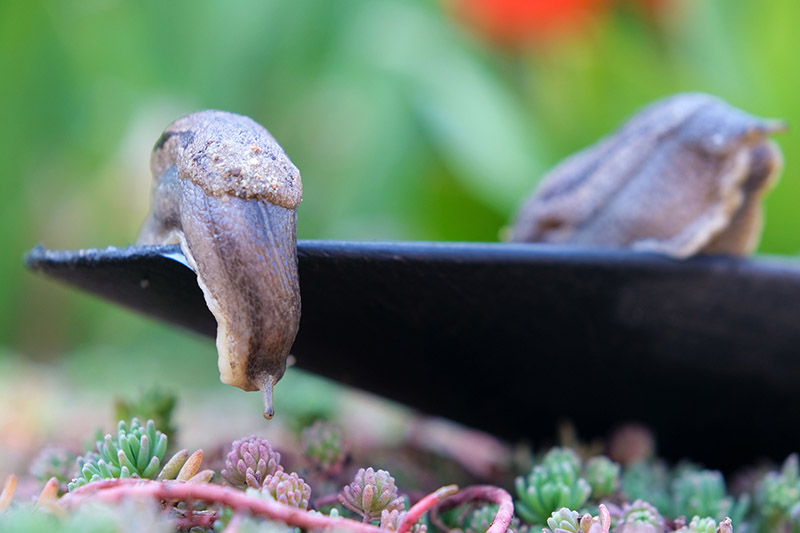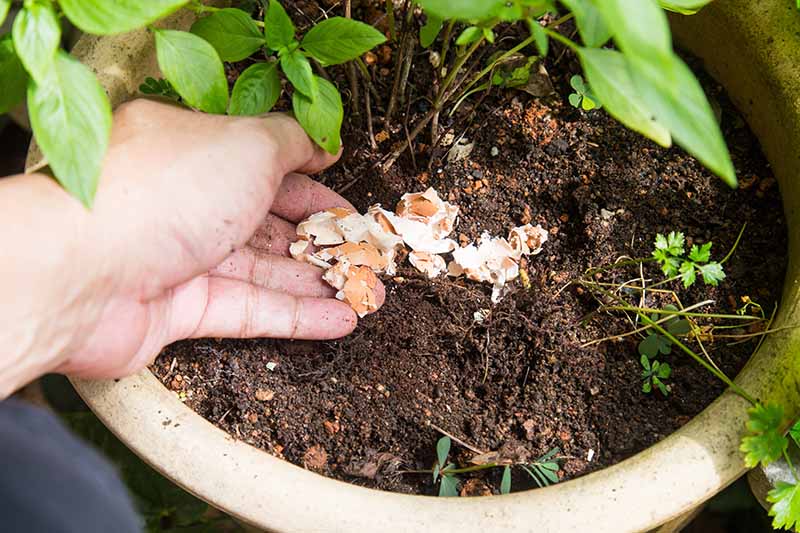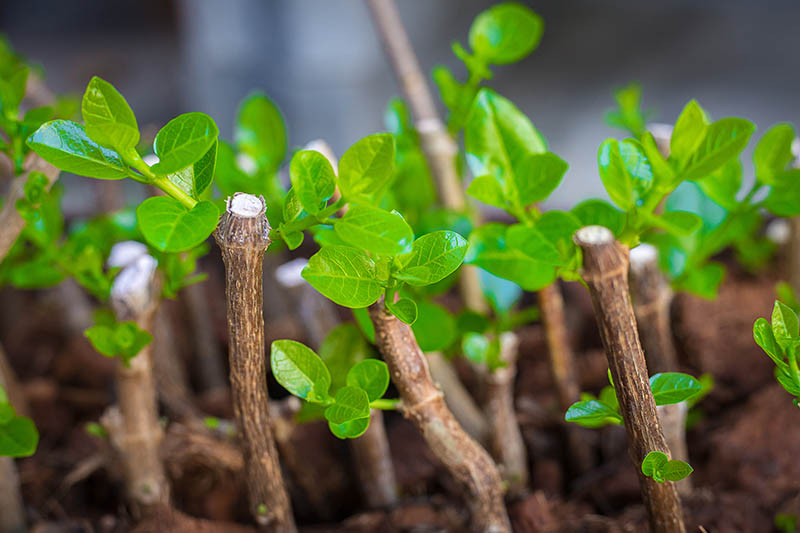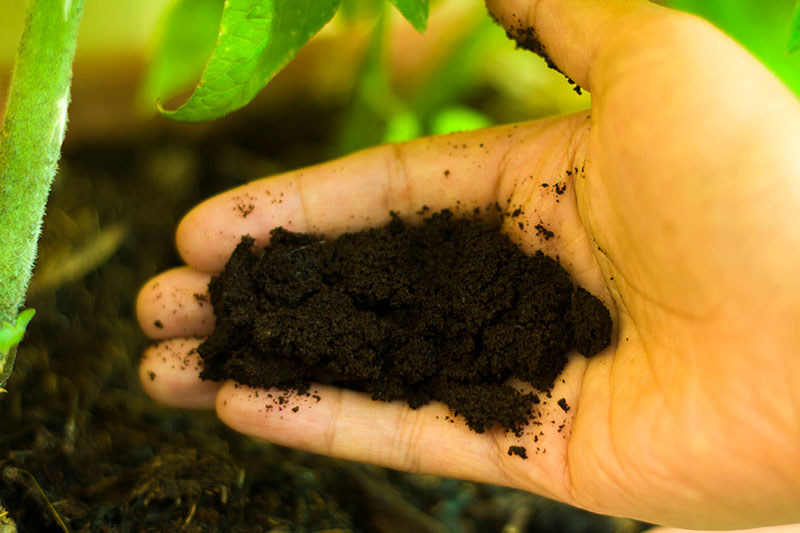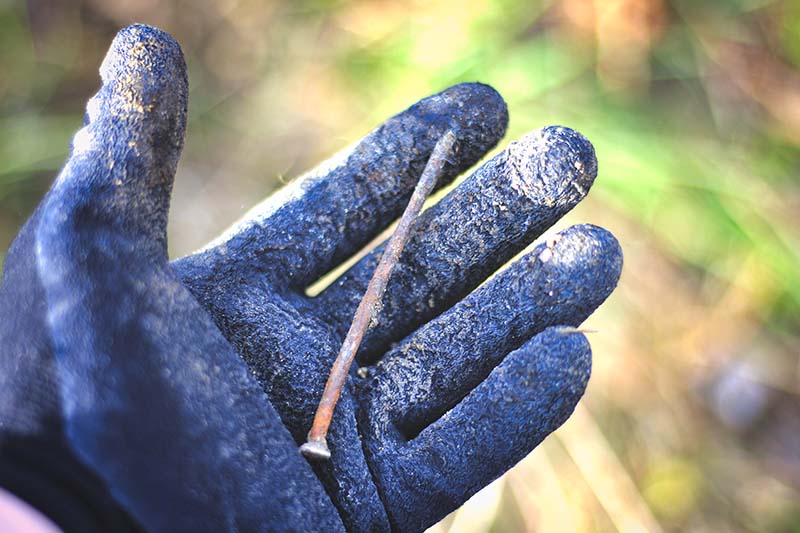Planting marigolds around our vegetables to deter pests. Getting potatoes in the ground on Good Friday. Using beer as a bait trap for slugs. Is there any truth to these recommendations? Are marigolds really effective at deterring annoying critters, and doesn’t the date of Good Friday change yearly? And, most egregious of all, have I been wasting perfectly fine beer as slug bait? We link to vendors to help you find relevant products. If you buy from one of our links, we may earn a commission. We’ll explore which ones are accurate, which are partially inaccurate and need some additional information added, and which are downright false. Here’s what we’re getting into: It’s impossible to capture everything in one article, but we’ll do our best to tackle the most popular garden myths floating around out there. Let’s start with the Just Plain Wrong.
Many Garden Myths Are Just Plain Wrong
These myths should get tossed away with last year’s gardening gloves.
If you add sugar to the soil around your tomatoes, you’ll grow a sweeter vegetable.
Nope, sorry, it doesn’t work that way, but I sure wish it did. The only way to grow a sweet tomato is to choose a sweet variety.
Generally, you want to choose a smaller cultivar if you like them to be sweet. You can still improve the overall flavor and taste of any tomato you grow by being consistent with your watering and the sunlight it receives. Tomatoes benefit tremendously from steady nurturing, and if you set your plants in healthy soil, with careful watering and diligent care, you’ll be rewarded with a harvest of tasty fruit.
I have one earthworm. I will cut it in half and have TWO earthworms!
No! No, no, no, it doesn’t work that way.
Sure, you’ll technically have two earthworms, but one will be dead and the other will need to start repairing itself immediately. This is a big, bad garden myth. Earthworms are relatively simple organisms and they can regenerate after suffering severe damage, but they still have a brain, a circulatory system, and nerves. If you cut a worm in half, the top end (the side with that big bump on it) could survive and repair the damaged tissue, but it’s impossible for the other half to do much of anything except rot in the ground. It’s impossible to avoid injuring earthworms when we’re digging into the soil (believe me, I’ve tried), but the least we can do to help out our favorite aerators and composters is to avoid injuring them whenever possible, especially by not intentionally cutting them in two!
Plant your potatoes on Good Friday.
I heard this one recently for the first time and was confused by the premise. Doesn’t Good Friday fall on a different date each year? What if it’s an especially cold period of the year, or a very wet one?
This is a garden myth that originates in Ireland. When the fleshy and delicious vegetable was first introduced to this area of the world, legend has it that superstitious denizens were wary of this new plant that grew underground. To prevent any devilry from affecting their crops and their health, the people planted on Good Friday. While planting potatoes in the springtime is ideal in some parts of the world, others are covered in snow or they may experience sudden cold snaps. Just to be safe, plant your potatoes when the danger of hard frost is behind you, and don’t worry about this garden myth.
Plant three crops of parsley: two for the devil, and one for me.
Parsley can be a difficult seed to start growing. It germinates slowly and benefits from warm soils.
Conditions can be understandably unforgiving outdoors, with seeds washed away by spring rains and sudden changes in the weather. We’ll have to forgive certain folks of yesteryear for thinking the devil himself was snagging their crops of parsley, and leave it at that. This garden myth doesn’t hold any weight in its reasoning!
Don’t water your plants’ foliage on a hot day or they’ll burn up!
I diligently followed this garden myth for years. And years. And years.
I even told people, “Don’t water your hosta when it’s sunny out! Those water droplets form itty-bitty magnifying lenses, and they’ll burn so many holes in your hosta you’ll think you’re growing Swiss cheese!” Researchers from Eötvös University in Budapest, Hungary performed the research and ran computer models that debunked this garden myth. Here’s the truth of the matter: the water droplets cannot focus the sun’s energy so much that it damages the leaves. However, cold water on a hot leaf could cause some of the damage gardeners may witness, when watering from the hose on a hot day, for example. As a general guideline, it’s best to water the soil – not the plant – to prevent damage to foliage and flowers, and to minimize excess moisture that can lead to fungal problems and the spread of disease.
Some Green-Thumbed Legends Offer a Grain of Truth
The following garden myths have a grain of truth stuck in them somewhere, but they’re also in need of clarification or refinement. Some of these are anecdotal and don’t have evidence to support them – except for the results themselves.
Is it safe to plant seeds? Sit on the ground with your bare rump to find out.
I mean, I’m all for sitting down on the ground in the garden, but without my pants on?
On the one hand, it seems uncomfortable. On the other, I imagine gardeners around the world discretely sitting their butts on the ground and deciding if the soil is, in fact, the right temperature for planting seeds… and all this does is make me chuckle. If this sounds like something you might be into, check out our article on World Naked Gardening Day. But don’t count on this method as any kind of accurate measure for determining soil temperature. This garden myth stems from the fact that soil needs to be within a certain range of temperatures to start planting seed without fear of the cold ground killing the roots and cotyledons when they first emerge. But nowadays, we have soil thermometers, extended weather forecasts, and easily replaced seeds and plants available to us if our first attempts fail. The idea that ground warm enough to sit on comfortably with a bare butt is guaranteed to also be pleasant enough to plant seeds that will germinate successfully has some basis in fact, although one person’s definition of comfort is no guarantee of whether it’s truly safe to plant or not.
Pennies in a zip-top plastic bag will repel flies, and compact discs repel deer.
In addition to my own personal anecdotal experience with this, I know enough folks that I trust and respect who swear by these garden myths to give them some credit.
More importantly, I haven’t uncovered any scientific consensus to disprove these theories. Supposedly, if we tie up clear plastic sandwich bags filled with water and a few pennies, the refracting light will scare away flies who suspect this odd presence in the garden could be a predator aiming to hunt them down. For deer, the idea is that slowly spinning, shiny compact discs will disorient or confuse them, and prevent them from snacking on our crops.
Is it true? I don’t know, but I’ve seen results from using compact discs to keep deer away. I’ve also noted that my friends who use the penny method regularly hold cocktail hours on their back deck with zero flies to bother us. I can’t find information to definitively prove or disprove these garden myths, but I know results when I see them.
Talk to your plants and they’ll grow better.
Some scientists, like Rich Marini, PhD of Penn State University, believe our conversation can have a positive effect on plants.
Marini says plants react to environmental stresses like wind and vibrations by growing stronger, and that our voices and conversations are essentially vibrations too. Therefore, our voices can have a positive effect on our plants. Dr. Marini does not agree, however, that the carbon dioxide we exhale when speaking helps plants to produce extra growth. The amount of carbon dioxide we’d need to expel would have to last for hours each day to result in any measurable change in our plants. I think the real value of talking to plants is that we can relax a little bit, and maybe feel a little silly telling our tomatoes we’re proud of that new set of flowers. And if we garden with others, a simple conversation can be all it takes to see the very real benefits of talking to and among our plants. We can toss this garden myth into the “It’s got some weight to it” bin.
Set out beer traps to end your garden slug problem.
Does it work? This one can be answered with a resounding “kinda.”
The yeast in beer will certainly help to attract slugs to a well-placed trap, but the validity of this garden myth has all of its weight resting on whether or not the slugs can get back out of the trap again. If you set out a shallow bowl with some beer in it, the slugs can climb up and slurp. But if it’s too shallow, they’ll just turn around and go back to whatever other goodies you have available in your garden when they’re done. The effectiveness of this legendary method rests on how quickly and effectively you can nab the slugs from these traps and dispose of them in another way. Occasionally they may drown, but more often they manage to climb up the side of the container and go on their merry way.
Plant marigolds to keep the bad bugs away.
This is a garden myth with a lot of truth to it, but likewise a lot of misunderstanding.
Marigolds do indeed deter some of the bugs we don’t like in the garden, such as cabbage worms, and they can attract beneficial flies that feed on aphids and other nasties. But we need enormous amounts of marigolds for this to have a real effect. A single six-pack of marigold starts from the nursery won’t do much for your garden. But if you carpeted the beds with a hundred plants, you’d definitely notice a positive impact. Keep in mind, however, that those extra marigolds will also compete for the same resources our vegetable crops and other edibles need. So, marigolds can certainly benefit your garden space as companion plants, but only when they’re grown in sufficient numbers, and there are some considerable drawbacks to this strategy as well. If you choose to plant some marigolds in your garden, I’d recommend you do it with only their lovely appearance and scent as your reward.
Flora Folklore That’s Garden Fact!
Yes, here we go! Definite garden truth that offers a clear, concise, factual bit of wisdom.
Use eggshells and banana peels in your garden for healthier plants.
Eggshells and banana peels contain significant amounts of calcium and potassium, respectively, and these common kitchen waste products can be a boon to your garden.
I’d sprinkle crushed eggshells on the surface of the soil or work it just underneath. And I recommend burying banana peels in the earth instead of tossing them loose on the surface of your garden beds – that’s a recipe for attracting rodents and other pests. These two helpful food scraps are basic elements of compost, and they may be put to the best use in a bin where they can contribute to creating nutrient-rich compost. However, in a pinch, adding them straight to the garden in their raw form works too.
Soak your plant cuttings in a “tea” made from soaked willow cuttings to promote rooting.
I have a friend who asked if he really could get willow whips to set root in a bucket of water. I told him he’d have a hard time getting them not to take root.
Willows are fast growers, and this is due in large part to the growth hormone indolebutyric acid, which they contain. This hormone will indeed aid your cuttings in starting to set root. Cut about twenty branches from a willow tree, nothing larger than a pencil in diameter. Don’t worry, your willow can handle losing these! Strip the leaves from the branches you’ve cut, and then cut the branches into pieces 1 to 2 inches in length. Boil half a gallon of water, remove it from the heat, and then place the pieces in the water to soak. In the past I’ve steeped mine for 24 hours because I’m an impatient guy, but they can sit in the water for 48 hours. Sieve the mixture and discard the twigs however you prefer to go about this (throw them on the compost, etc.). Now your homemade alternative to powdered rooting hormone or a commercially available gel is ready to use. Take whatever plant cuttings you wish to propagate, and stand the stems cut side down, in a small glass with an inch or two of the tea for about eight hours. Then you can plant them in your preferred medium. I always use sand mixed with perlite or vermiculite for cuttings to allow for easy transplanting, and to make it easier to check the root development. Use the tea quickly, within a day or three at most, for the best results.
Apply coffee grounds to the soil around your azaleas.
I’m enjoying a nice cup of coffee as I write this, but I am dreading reaching the bottom of my cup where those gritty grounds rest. Luckily, we’ve got a use for coffee grounds! They are rich in nitrogen, containing as much as 2 percent by volume. Most plants will generally enjoy this blast of nitrogen, and the slightly acidic composition of used coffee grounds is perfect for azaleas.
You can spread the grounds over the surface of the soil, or better yet, mix them up with something else like grass clippings or compost. Try to spread the application evenly around your plants, so you don’t wind up with a huge clump of coffee grounds in one area, attracting pests or preventing adequate surface drainage. Like banana peels and eggshells, used coffee grounds could be best utilized in your garden as an ingredient added to your compost, but a direct application will also do the trick. Read more about using coffee grounds in the garden here.
Bury rusty nails, pins, and other metal objects near your plants to aid their growth.
There’s plenty of truth in this garden myth! Metallic rust can be beneficial in the garden, as the chemical process that’s taking place releases tiny bits of iron into the soil. That’s a benefit to some of our edible favorites in the garden like carrots, tomatoes, and garlic.
The rusting process itself can increase the acidity of soil, a benefit to ericaceous plants like blueberries and azaleas. However, before you run outside and try this one, I’d like to ask you to pause for a second first to stop and think about this: Who in their right mind thought back in the day that it would be a good idea to recommend burying tiny, sharp, metallic objects in the soil, with the goal of allowing them to rust in the garden?! That’s a recipe for stabbed fingers and a fretful few moments of wondering when your last tetanus shot was.
Garden Folklore Galore!
We’ve looked at some popular garden myths and have found some that are truthful, some that need some clarification, and others that are downright wrong. Hopefully we can learn something from this, even if all we’ve gained is more of an appreciation for the myths and anecdotes that contribute to the rich history of gardening.
On a personal note, a major takeaway from this article that holds weight with me is that even ill-informed garden tips and legends still hold some value. It could be that we maintain some shared story with these tips and myths, or that we’re always out there trying to prove one another right or wrong. But I think the real value is that they get us outside and into the garden. Verifying tips and swearing by the odd bit of folklore, spending time getting dirt under our nails as a result, is one of the best experiences humans can experience and absorb. And so, I welcome crazy new tips or archaic bits of pseudo-knowledge, as long as it gives me a reason to get outside. In researching this article I found a few truly wacky garden myths, stuff like, “Don’t bring dandelions into the home or you’ll wet the bed,” and it proved difficult to find any additional information or background on those. I, for one, am not about to experiment with that dandelion one. Do you have any old garden folklore or anecdotal tips to share that weren’t included here? Drop us a comment below – we’d love to hear it! And if you are interested in more gardening curiosities, give these guides a read next:
Plant Folklore: Myths, Magic, and Superstition Parsley, Sage, Rosemary, and Thyme: a Love Story Green Flowers: From Beautiful to Bizarre
© Ask the Experts, LLC. ALL RIGHTS RESERVED. See our TOS for more details. Uncredited photos: Shutterstock.
